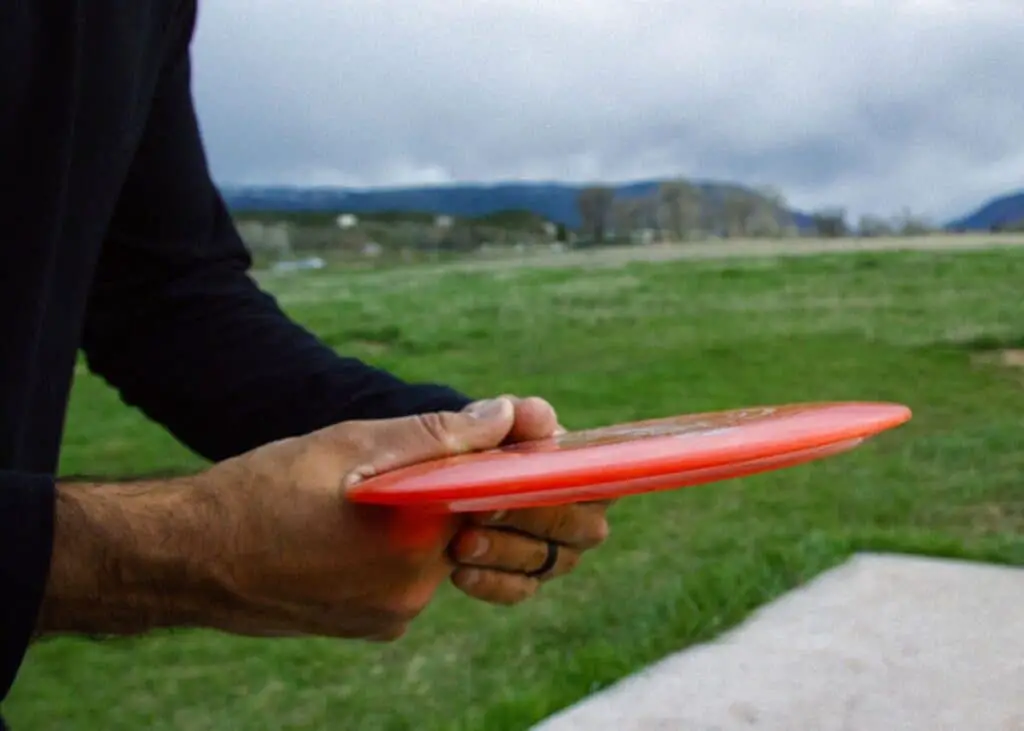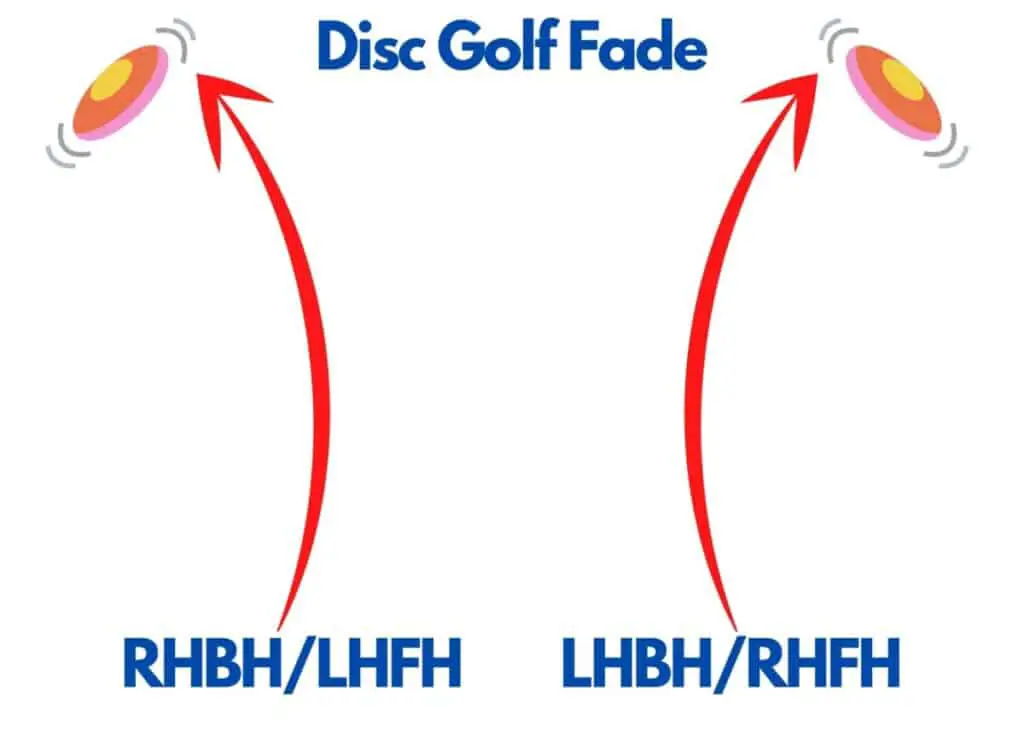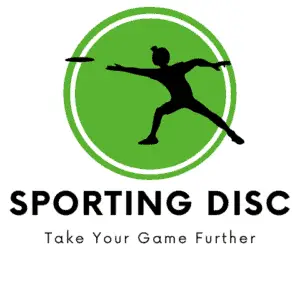When I first started playing disc golf, I was frustrated to see that a majority of the time my throws immediately would fade to the left. I was left wondering what made my disc fade so much?
The truth is, most discs will fade to some degree. There are many different explanations why a disc will start its fade sooner instead of gliding then fading. There are many reasons why a disc will fade, which I’ll try to explain in this article.
Table of Contents
Here is Why a Disc Golf Disc Fades
In disc golf, a disc will fade as it’s slowing down and falling at the same time. At this point, the air is no longer hitting the disc at the front, but exerting an upward force on the bottom. The spinning of the disc combined with the upward force creates lift in one direction. This will fade the disc.
In this article, I’ll explain physically why a disc fades then address why most beginners struggle with fade when starting to play disc golf.

How Do Flight Ratings Affect Disc Fade?
Some disc golf discs have a flight rating system that’s compromised of 4 numbers on the disc. They are speed, glide, turn, and fade. These numbers make up a flight rating system for a disc.
What the flight rating does is predict for you the intended flight pattern of the disc when thrown correctly. This way you can make an educated disc selection depending on the throw that needs to be made.
Fade is always the last digit in the flight ratings of a disc. Fade will be shown on a scale of 0 to 5. Zero is the least amount of fade and 5 is the most fade.
A disc with a 5 fade will give you a string fading motion at the end of the throw. As opposed to a 0-2 fade that will show a little more distance and less fade at the end of the throw.
Using flight ratings for fade can be to your advantage, especially if you don’t have a direct line to the target and need to “shape” your throw to navigate around objects, like trees for example.
Why Do Discs Fade Right After Throwing It?
Many beginners might find that their disc will fade very soon after throwing it. This is a common issue and can be solved with practice and experience.
Below are some common reasons that a beginner might see a disc fade when throwing it.
1. Arm Speed
Underdeveloped throwing form can contribute to a lack of arm speed. if your arm speed isn’t fast enough to make the disc perform to its intended flight characteristics it will slow and fade faster.
If the flight numbers of the disc show that it has a turn of -1 and a fade of 3 you will need to throw the disc at the indicated speed rating to achieve those flight characteristics.
If your arm speed isn’t fast enough can affect the flight characteristics of the disc. Improving your form will naturally increase arm speed and reduce the amount of early fade because the disc is slowing down and falling quicker.
2. Disc Speed
Similar to arm speed, not matching arm speed to disc speed can make the disc slow and fall sooner than it should.
The disc slowing and falling through the air will cause the disc to fade instead of gliding for long distances.
As a beginner player, using a slower disc can allow for a long-distance throw because the disc speed will match your arm speed.
3. Hyzer Throwing Angle
At times the release angle you throw the disc at can increase or decrease the amount of fade to expect. It might be the case that you’re releasing the disc with a slight hyzer angle.
The hyzer angle is when the top or face of the disc is facing away from you. A hyzer angle will make a disc fade much sooner than it would if the disc was released flat.
4. Disc Selection
Even if you’re throwing the right disc for your experience and arm speed, the flight characteristics of the disc can still make it fade more than you want.
This is called disc stability and it can determine if a disc is what is called overstable or understable. An overstable disc will naturally fade to the left much more than a neutral or understable disc will.
An understable disc will flip and turn in the opposite direction. In the case of an RHBH throw, the disc will turn to the right instead of fading to the left.
A common characteristic of an understable disc is to form an “S” shaped flight pattern. This means it will turn right before finally fading to the left.
What Are the Physics of a Fade?
The reason why a disc will fade to the left is a combination of several factors. First, the shape and design of the disc play a role in how air is directed over them when in flight.
A disc that is more overstable and has a high tendency to fade will have a higher nose, and sharper leading edge. A disc that is shaped more like a dome won’t fade as much.
The second factor is that as the disc is falling and spinning the air is no longer pushing over the top of the disc. Now the air is exerting an upward force on the disc.
Finally, as the disc is slowing down and the air is now exerting this upward force the spinning of the disc (and the design of the nose) will direct the air to create lift on one side of the disc. If the disc is spinning in a clockwise direction (common for an RHBH thrower) that means the disc will fade to the left.
If you’re an LHBH or an FHRH thrower, the opposite is true. The disc is spinning in a counterclockwise direction and the disc will fade to the right.

Final Thoughts | Why Do Disc Golf Discs Fade?
Almost every disc will fade to a certain degree. The point at which it fades and how hard can vary depending on disc selection, arm speed, and release angle.
When understood and used properly, you can use a fade to work around a bend in the course or objects that can’t be passed through or thrown over the top.
Being able to use a fade to your advantage can signal that you’re becoming a very experienced player.
